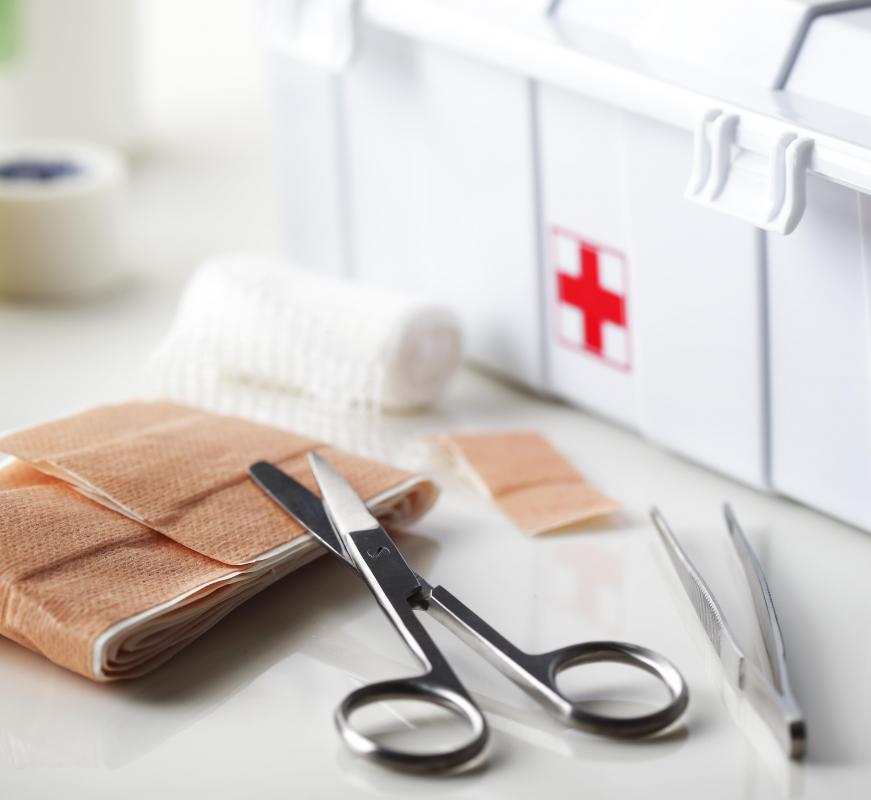At TheHealthBoard, we're committed to delivering accurate, trustworthy information. Our expert-authored content is rigorously fact-checked and sourced from credible authorities. Discover how we uphold the highest standards in providing you with reliable knowledge.
How Do I Make a Head Bandage?
A head bandage is easy to make. You can use a large triangular bandage to hold a dressing securely on the scalp or forehead. Head injuries bleed a great deal because the vessels are close to the skin, so direct pressure is the best way to stop the bleeding. Gauze on a roll will also hold a dressing in place. A blow to the head may be minor, but it can also be very serious, and medical attention is important following this type of injury.
There are several ways to make a head bandage, depending on the location of the wound. A triangular head bandage may come in your first aid kit or you can use a large bandanna to cover scalp lacerations. The first step is to stop bleeding by applying direct pressure with a clean folded cloth. If blood soaks through the cloth, don’t remove it; put another one over it.

A non-stick dressing, gauze pad or clean handkerchief can then be placed over the wound. If you’re using a bandanna as a head bandage, fold it into a triangle and roll up the widest end a few inches. From behind, place the rolled part on the forehead. Drape the large section of the cloth over the head and wrap the ends around the back, similar to tying a kerchief. The point of the triangle should be hanging down underneath the two ends.

Cross the ends in an overhand knot and bring them back around to the forehead. Tie a square knot in front and tuck the ends in. The rest of the bandage can be pulled snug over the scalp and then rolled up and tucked into the overhand knot on the back of the head. Do not tie it too tightly, or leave it too loose. This will hold the dressing firmly in place.

You can also make an effective head bandage for forehead, ear and cheek wounds with a roll of gauze. Place your dressing on the wound and wrap the roll around the head several times to hold it, taping the end in place. A toothache-style bandage will secure a dressing over the ear or cheek. Wrap the gauze under the chin and over the wound, crossing it on the side and continuing across the forehead and around the back. To avoid choking, this style of bandage should not be used if there are jaw injuries or if the person is in danger of vomiting.
AS FEATURED ON:
AS FEATURED ON:














Discuss this Article
Post your comments